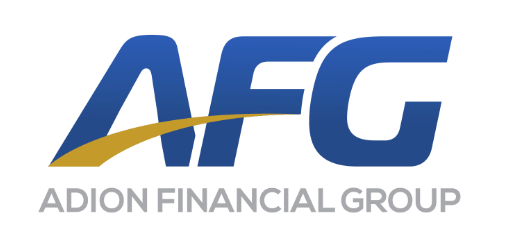How Subcontracting Affects Workers Compensation Insurance Needs in Connecticut
See How We're Different
or call us: (888) 585-5188
How Subcontracting Affects Workers Compensation Insurance Needs in Connecticut
25 May 2025

In the ever-evolving landscape of business operations, subcontracting has emerged as a popular strategy for many companies in Connecticut. This approach allows businesses to delegate specific tasks to specialized contractors, often leading to increased efficiency and cost savings. However, while subcontracting can provide numerous benefits, it also introduces complexities, particularly concerning workers' compensation insurance. Understanding these implications is crucial for both employers and subcontractors to ensure compliance and protect their interests.
The Basics of Workers Compensation Insurance
What is Workers Compensation Insurance?
Workers' compensation insurance is a form of insurance that provides wage replacement and medical benefits to employees who are injured in the course of employment. In Connecticut, this insurance is mandatory for most employers, ensuring that workers receive necessary support without needing to prove fault. The system is designed to protect both employees and employers, offering a safety net for workers while limiting liability for businesses.
In the event of a workplace injury, workers' compensation can cover medical expenses, rehabilitation costs, and a portion of lost wages. This not only aids the injured worker but also helps maintain workplace morale and productivity by ensuring that employees feel secure in their roles. Furthermore, the insurance system encourages employers to maintain safe working environments, as they are incentivized to reduce workplace hazards to lower their insurance premiums. This proactive approach contributes to overall workplace safety, benefiting both employees and employers alike.
Why is Workers Compensation Important for Subcontractors?
Subcontractors often operate as independent entities, which can lead to confusion regarding their coverage under workers' compensation insurance. In Connecticut, subcontractors may or may not be covered under the primary contractor's policy, depending on the nature of their relationship and the specifics of their contract. This ambiguity can create significant risks for both parties. For instance, if a subcontractor is injured on the job and lacks their own coverage, they may find themselves in a precarious financial situation, facing mounting medical bills without any safety net.
For subcontractors, having adequate workers' compensation coverage is essential. Without it, they may face financial ruin in the event of an injury, as they would be responsible for their medical bills and lost wages. For
primary contractors, the lack of coverage for subcontractors can lead to liability issues, potentially resulting in costly legal disputes. Additionally, many clients and larger companies require proof of workers' compensation insurance before hiring subcontractors, making it a critical component of securing contracts. This requirement not only protects the subcontractor but also enhances the overall reputation and reliability of the primary contractor, fostering a culture of safety and accountability in the industry.
Understanding Subcontracting in Connecticut
The Rise of Subcontracting
Subcontracting has become increasingly popular in various industries, including construction, manufacturing, and professional services. This trend is driven by the need for specialized skills, flexibility in workforce management, and the ability to scale operations quickly without the overhead of hiring full-time employees.
In Connecticut, the construction industry, in particular, has seen a surge in subcontracting arrangements. As projects become more complex and require diverse expertise, primary contractors often rely on subcontractors to fulfill specific roles, from electrical work to plumbing and beyond. This dynamic can lead to improved project outcomes but also necessitates a thorough understanding of insurance implications. The state's regulatory framework encourages this trend by providing guidelines that help protect both contractors and subcontractors, ensuring that the quality of work remains high while also fostering a competitive market.
Moreover, the rise of technology has facilitated the growth of subcontracting. Online platforms and marketplaces have emerged, allowing contractors to easily find and hire subcontractors with the necessary skills. This digital transformation not only streamlines the hiring process but also enhances communication and project management, making it easier for teams to collaborate across various locations. As a result, subcontracting is not just a response to labor shortages; it is also a strategic approach to project management that leverages technology to improve efficiency and outcomes.
Types of Subcontractors
Subcontractors can be classified into various categories based on their roles and responsibilities. Common types include:
- General Subcontractors: These are the main subcontractors hired by a primary contractor to manage specific aspects of a project.
- Specialized Subcontractors: These subcontractors possess specialized skills and knowledge, such as electricians, plumbers, or HVAC technicians.
- Independent Contractors: Often working on a freelance basis, these individuals may provide services without being tied to a specific project or company.
Each type of subcontractor has unique insurance needs, and understanding these differences is essential for ensuring compliance with state regulations and protecting all parties involved. For instance, specialized subcontractors may require specific liability coverage that addresses the risks associated with their trade, while general subcontractors might need broader coverage that encompasses multiple aspects of a project. Additionally, the contractual relationships between primary contractors and subcontractors can vary widely, influencing the type of insurance required and the extent of liability each party assumes. As such, it is crucial for all stakeholders to engage in thorough discussions about insurance and risk management before embarking on any subcontracting arrangement.
Furthermore, the relationship between subcontractors and primary contractors can evolve over the course of a project. As challenges arise, such as unexpected delays or changes in project scope, effective communication becomes paramount. Subcontractors often play a critical role in problem-solving and adapting to these changes, which can significantly impact the overall success of the project. Therefore, fostering a collaborative environment where subcontractors feel valued and empowered to contribute their expertise can lead to innovative solutions and ultimately enhance project performance.
Implications for Workers Compensation Insurance
Coverage Requirements for Contractors and Subcontractors
In Connecticut, the law requires that most employers, including contractors, carry workers' compensation insurance. However, the coverage requirements can differ based on whether the worker is classified as an employee or an independent contractor. For primary contractors, it is crucial to verify the insurance status of any subcontractors they hire. This verification process can include checking the subcontractor's insurance policy details, ensuring that it meets state requirements, and confirming that it is current and not expired. By doing so, primary contractors can safeguard themselves against potential claims that could arise from workplace injuries.
Subcontractors must also be aware of their obligations. If they have employees, they are typically required to carry their own workers' compensation insurance. Failure to do so can result in penalties and legal repercussions, not to mention the financial burden of covering medical expenses out of pocket. Additionally, subcontractors should understand the specific coverage limits that are necessary for their line of work, as certain industries may have higher risks and thus require more comprehensive policies. This proactive approach not only ensures compliance with state laws but also fosters a safer work environment for all parties involved.
Liability Issues Arising from Subcontracting
One of the primary concerns when subcontracting is the potential for liability issues. If a subcontractor's employee is injured on the job, the primary contractor may be held liable if the subcontractor does not have adequate workers' compensation coverage. This scenario can lead to costly lawsuits and damage to the contractor's reputation. In some cases, the primary contractor may even face increased insurance premiums or difficulty obtaining coverage in the future due to claims history associated with subcontractor-related incidents.
To mitigate these risks, it is advisable for primary contractors to require proof of workers' compensation insurance from subcontractors before entering into any agreements. This practice not only protects the contractor but also ensures that subcontractors are adequately covered in case of an accident. Furthermore, establishing clear contractual obligations regarding insurance coverage can provide an additional layer of protection. By including indemnification clauses and specifying the required insurance limits, contractors can create a more secure framework for their projects. This not only helps in managing liability but also promotes a culture of safety and responsibility throughout the construction process, ultimately benefiting all parties involved.
Best Practices for Managing Workers Compensation in Subcontracting
Conducting Thorough Insurance Checks
Before hiring a subcontractor, it is essential to conduct a thorough insurance check. This includes verifying that the subcontractor has active workers' compensation insurance and understanding the extent of their coverage. Requesting a certificate of insurance can provide peace of mind and ensure compliance with state regulations.
Additionally, it is wise to review the subcontractor's claims history. A high number of claims may indicate potential issues with safety practices, which could pose risks to the primary contractor as well. Understanding the subcontractor's past incidents can also inform the primary contractor about the potential risks involved in the project, allowing for better planning and risk management strategies.
Establishing Clear Contracts
Contracts play a crucial role in defining the responsibilities and liabilities of both parties involved in a subcontracting arrangement. A well-drafted contract should clearly outline the insurance requirements, including the obligation for subcontractors to maintain workers' compensation coverage.
Furthermore, contracts should include indemnification clauses that protect the primary contractor from liability arising from the subcontractor's actions. This legal protection can be invaluable in the event of a dispute or injury. It is also beneficial to include specific terms regarding the reporting of accidents and incidents, ensuring that both parties understand their responsibilities in the event of a workplace injury. This clarity can help streamline communication and response efforts, minimizing confusion during critical moments.
Training and Safety Protocols
Implementing robust training and safety protocols can significantly reduce the risk of workplace injuries. Primary contractors should ensure that subcontractors adhere to safety standards and provide necessary training to their employees. This proactive approach not only protects workers but also minimizes potential claims against workers' compensation insurance.
Regular safety audits and inspections can help identify hazards and improve overall workplace safety. By fostering a culture of safety, businesses can reduce the likelihood of accidents and injuries, ultimately benefiting all parties involved. Additionally, offering incentives for safe practices can motivate subcontractors to prioritize safety, creating a collaborative environment where everyone is invested in maintaining a secure workplace. This commitment to safety can enhance the overall reputation of the primary contractor, making them a preferred choice for future projects and partnerships.
Legal Considerations in Subcontracting
Understanding the Legal Framework
Subcontracting in Connecticut is governed by a complex legal framework that includes state laws, regulations, and industry standards. It is essential for both primary contractors and subcontractors to understand their rights and responsibilities under these laws. The Connecticut Department of Labor provides resources and guidelines that help clarify these legal obligations, ensuring that all parties involved in a subcontracting agreement are aware of their roles and the legal implications of their actions.
In Connecticut, the Workers’ Compensation Act outlines the requirements for coverage, benefits, and the process for filing claims. Familiarity with this legislation can help businesses navigate the intricacies of workers' compensation and avoid potential pitfalls. Additionally, understanding the nuances of the act, such as the distinctions between independent contractors and employees, is crucial. Misclassification can lead to significant legal repercussions, including fines and increased liability, making it imperative for contractors to conduct thorough assessments of their workforce.
Consulting Legal Experts
Given the complexities surrounding subcontracting and workers' compensation insurance, seeking legal counsel can be beneficial. Legal experts can provide guidance on compliance, contract drafting, and risk management strategies. They can also assist in negotiating terms that protect both parties' interests, ensuring that contracts are not only legally sound but also equitable. This proactive approach can foster better working relationships and minimize disputes down the line.
Consulting with an attorney who specializes in labor law or workers' compensation can help businesses understand their obligations and protect their interests. This investment in legal expertise can prevent costly mistakes and ensure that all parties are adequately protected. Furthermore, legal professionals can offer insights into emerging trends in subcontracting laws, which can be particularly valuable in a rapidly changing regulatory environment. Staying informed about these changes allows businesses to adapt their practices accordingly, maintaining compliance and enhancing their operational efficiency.
Conclusion
Subcontracting can offer numerous advantages for businesses in Connecticut, but it also presents unique challenges, particularly concerning workers' compensation insurance. Understanding the implications of subcontracting on insurance needs is crucial for both primary contractors and subcontractors. By conducting thorough insurance checks, establishing clear contracts, and implementing safety protocols, businesses can mitigate risks and ensure compliance with state regulations.
As the landscape of work continues to evolve, staying informed about the legal and insurance requirements surrounding subcontracting is essential. By prioritizing workers' compensation coverage and fostering a culture of safety, businesses can protect their employees and their bottom line, paving the way for successful subcontracting relationships.








